Porridge | Congee
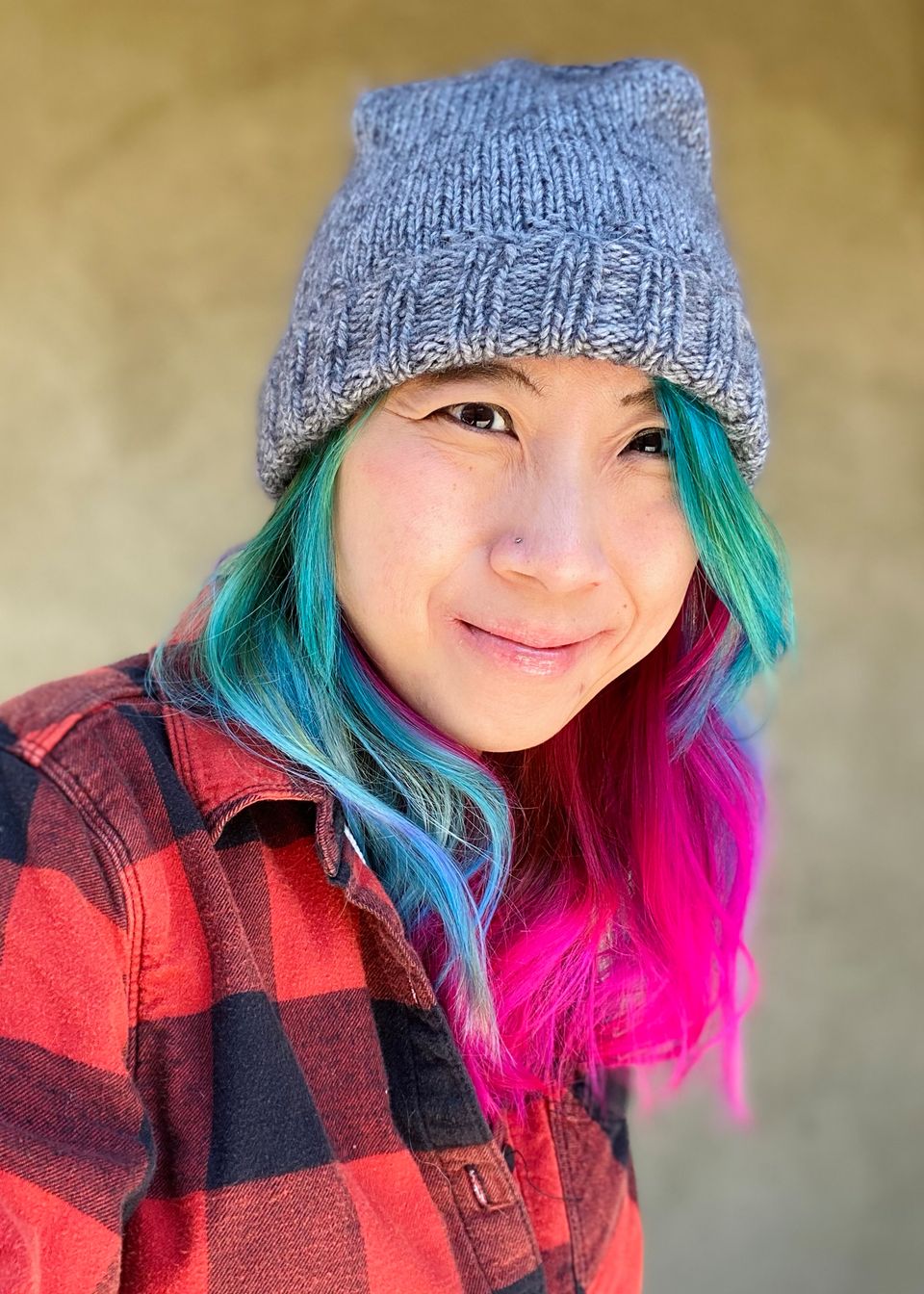
Shing Yin Khor is the Eisner-winning and National Book Award finalist cartoonist of The Legend of Auntie Po. They are also an art chaos machine making strange and beautiful games, fish marionettes, fortune dispensing capsule machines, and large scale immersive installations.
Porridge is a survival food. I am not sure if it is simply because of how you can stretch one cup of rice to make warm bowls of wet starch for four, or because of the way a warm bowl fits into your hand, the way the smooth rice doesn’t hurt even the sorest of throats, the way it will use most leftovers you have without complaint. I grew up calling this meal porridge, likely a remnant of living in a colonial British occupied country, but I’ve shifted to calling it congee like my white friends do, because the Chinese restaurants in the United States call it that, and I no longer live in a country where the dominant grain is rice. It has other names—juk, bubur, okayu, xifan—but the point is that it’s just rice and water, boiled until the rice expands and the starch breaks down and you are left with something that is not quite a soup, but is quite a comfort.
I love porridge because it is the food equivalent of a warm handmade blanket. I also love it because it means that I have always been able to feed my friends. For the longest time, it was all I knew how to cook, something I picked up from my first college roommate and her rice cooker. I hadn’t really learned how to cook for most of my life because it felt like an intensely gendered task. In my extended family, it was always the women in the kitchen, and the men outside drinking beer. Neither seemed particularly appealing to me, but one definitely involved distinctly more labor and stress than the other.
I learned to cook out of necessity, not out of a need to feed myself. I owned my own rice cooker after a while—you can get by for a long time on rice, fried eggs and an eating disorder. But where I could deny myself the comforts of food, it was not something I could deny my friends. I learned to cook in a phase of my life where I was building large installation art, a field that relies on large amounts of volunteer labor from friends. It is a given that volunteer labor ought to at least be compensated with food and beer, and if that food is cheap pizza too often, the willingness to perform labor for cheap pizza very quickly evaporates. Cooking, for me, became an element of a project management puzzle, but I thrived on those puzzles. I didn’t fall in love with cooking quite as much as I fell in love with the logistical questions of feeding people. How do all the elements of the meal arrive on the table on time and at the temperature intended? Which kitchen implements are occupied at what time? How do the flavors pair? If people offer to help, what tasks can they be set to? How do you feed 30 people with a budget of $1.50 per person? It was exhilarating, and the answer of how to feed 30 people with a budget of $1.50 per person is that you can always serve a porridge bar. It probably comes out to less money than ordering cheap pizza, but it is a larger expenditure of effort and thoughtfulness. It says “thank you for working for me, I will also work for you”.
I came to love cooking by cooking for others. It’s a service, but one done out of love, and not obligation. It is a language, when words aren’t quite enough. It is a gesture of respect, and admiration, and caring. I love cooking for others the most: the logistical strategies of preparing food for a crowd, the beauty of a decadently arranged cheese plate, the comfort of a hearty pot of stew for 20 paired with crusty bread, the joy of gathering friends around a table to eat family-style, where family-style refers to both the serving arrangement and the company. Porridge, the first thing I learned how to cook, is still one of the things I love to make the most, and still very much in my constant rotation when I make food for others, even now that I don’t need to feed my friends with a crumpled $20 bill. I can put out a full and extremely decadent feeling congee bar for almost nothing, if I am working with a fridge full of leftovers. It’s a love letter, both to my heritage and to my pals, but also to leftovers, to the simplicity of rice and water and the way starch breaks down to become something special.
This is what one of my congee bars looks like.
There are bowls of pickles and dried fish and pork floss, fried garlic and shallots, marinated tofu and stir-fried mushrooms, heaps of vegetables and thinly sliced ginger. The pickles come from jars at the Chinese market, the dried fish is usually a can or two of Pearl River Fried Dace (with black beans). The tofu is just marinated in soy and mirin. I buy whatever large bag of green vegetable looks good at the market and just sauté it up with some garlic. I’m Malaysian-American, but generally identify with a pan-Asian sort of diaspora identity, so there is usually a tub of kimchi around. The primary sauce topping I put out is a 50/50 mix of soy and sesame oil, with thin slices of ginger floating in it. There has to be a small bowl of white pepper.
It’s a spread that feels thoughtful and lavish. Everyone fills their own bowls, topped with whatever they prefer. We gather after a night of revelry, or a day of work, or just for brunch. We gather, making little paper tags to identify the gluten-free and vegetarian and vegan toppings. We gather, asking questions about this ingredient or that ingredient, peeking at someone’s else’s bowl to figure out the correct proportions (there are no correct proportions). We gather, hands warmed by hot porridge and nasal cavities cleared by the sharp bite of ginger slices.
We gather.
Shing’s Porridge (or Congee) Recipe or Ratio
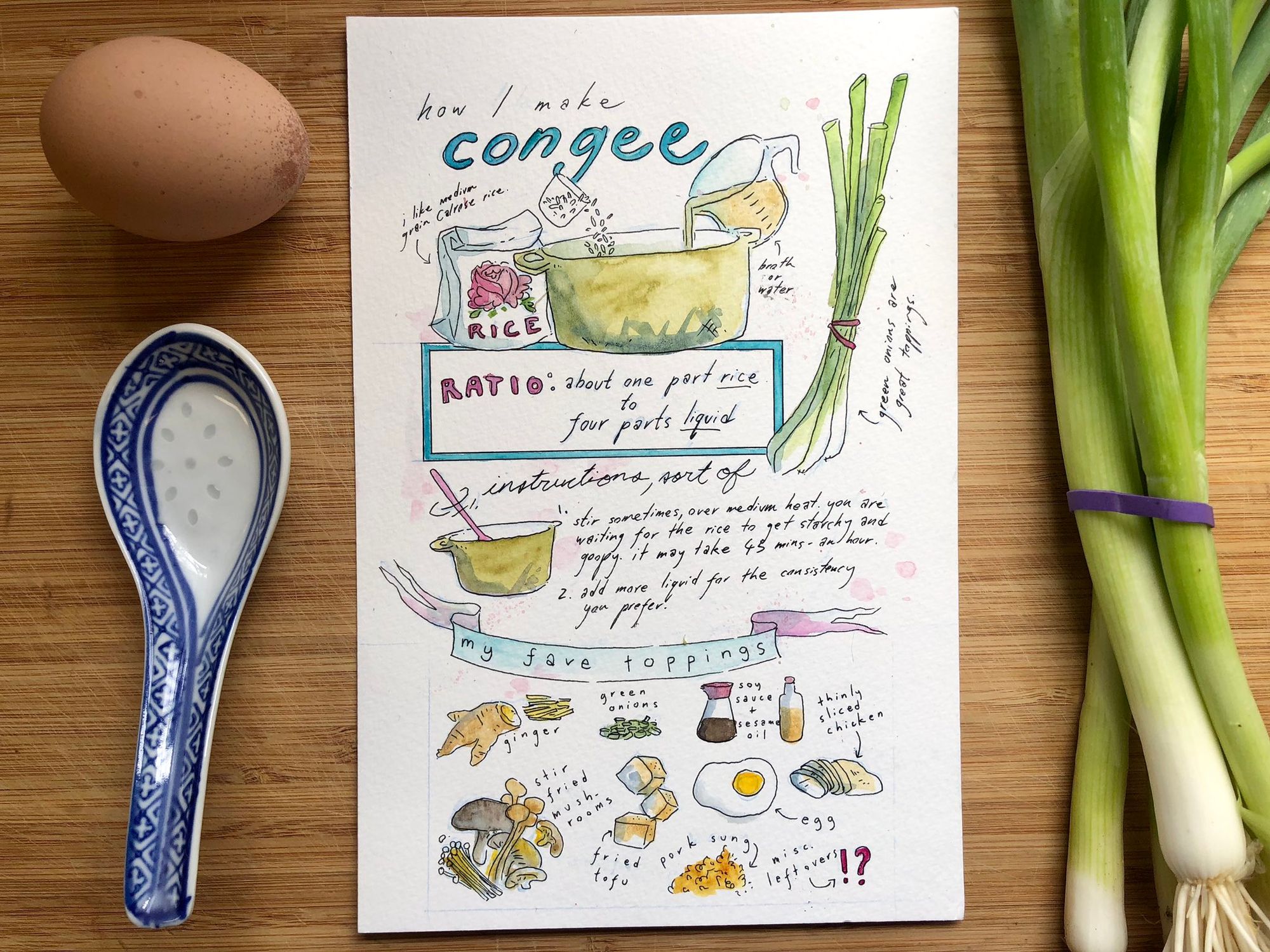
This recipe comes from either Shing Yin’s mom or grandmother, or the back of a bag of rice. Prepared as written, it produces enough congee to feed 4-6 people.
Get the Recipe: PDF, Google Doc
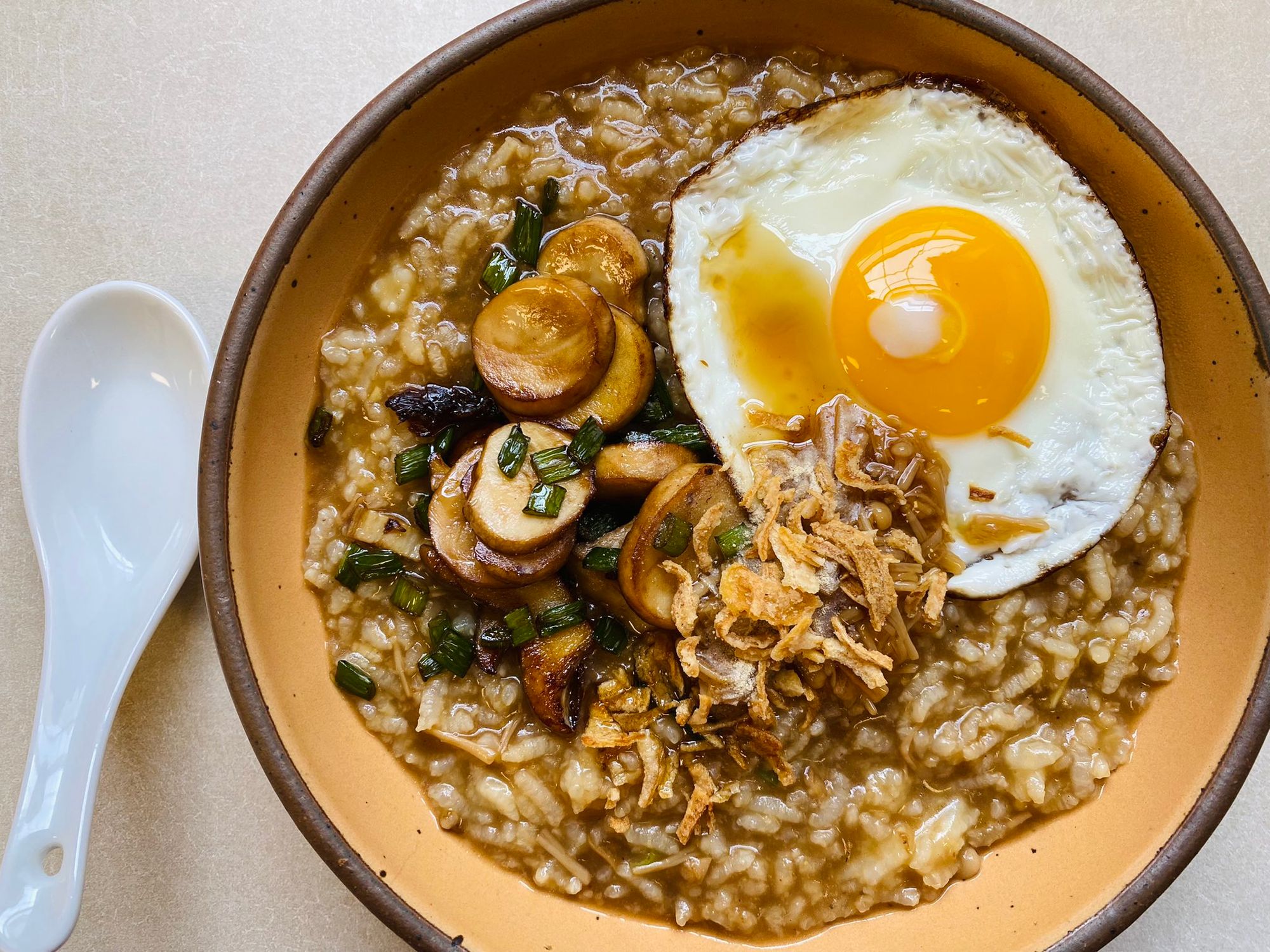
If you’d like to own the Personal Canons Cookbook ebook, which collects all these essays and recipes in easy-to-reference, clickable format—plus loads of bonus recipes from me!—join the Stone Soup Supper Club. The ebook is free for subscribers, who will get the download link in their inboxes in the first Supper Club email of 2024!
Remember: Care for yourself and the people around you. Believe that the world can be better than it is now. Never give up.
—Gailey




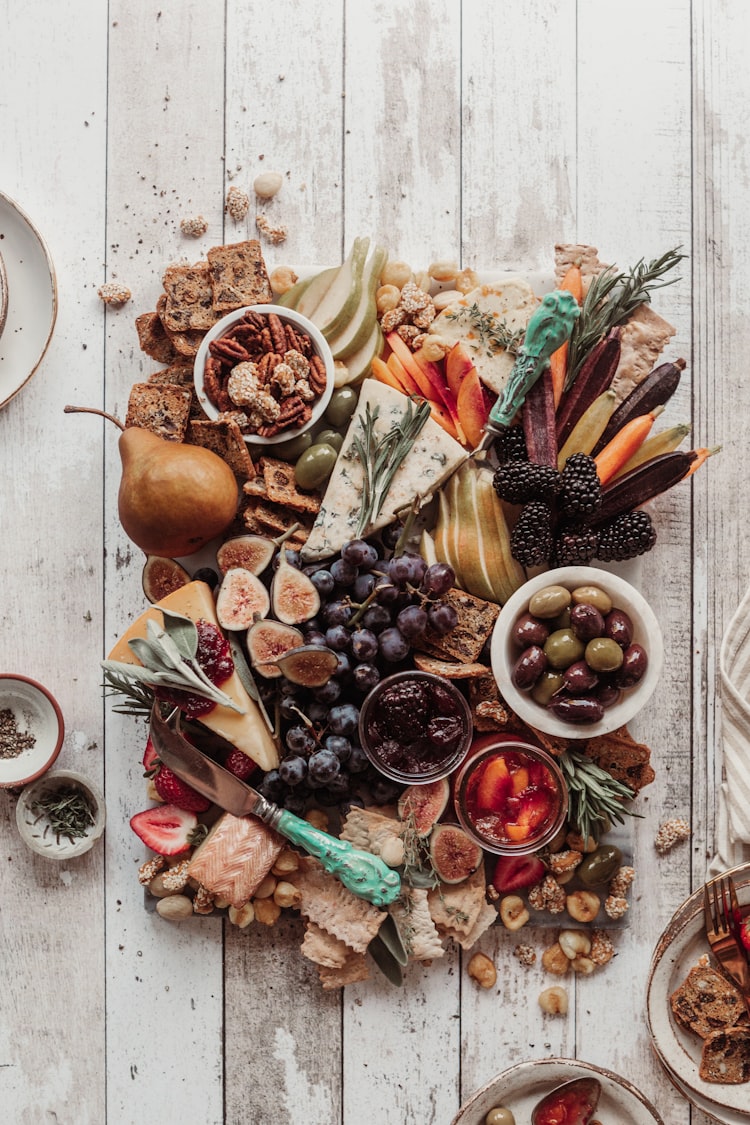
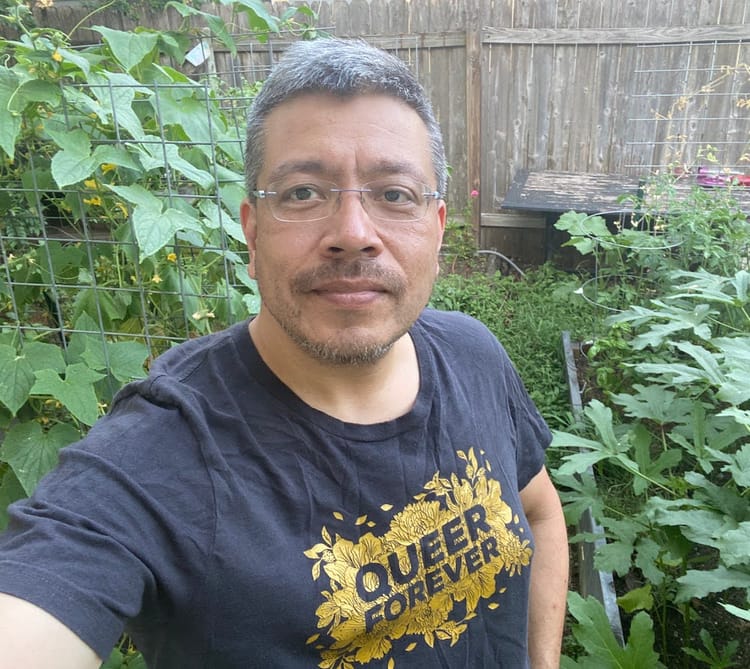
Member discussion